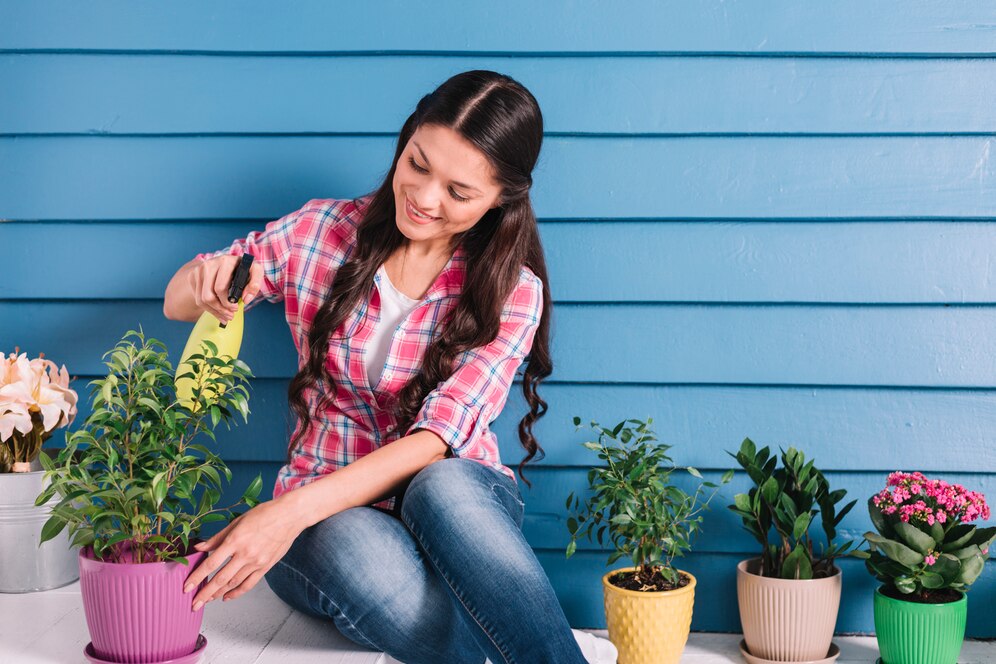
Flower Gardening in Containers: Tips for Small Spaces
Share
Container flower gardening is the perfect solution for people with limited space. Whether you have a balcony, patio, or small backyard, this guide helps you get started with growing beautiful flowers in pots. You'll learn how to choose the right containers, pick flowers that thrive in small spaces, and care for them so they bloom beautifully. This blog will walk you through practical steps with easy-to-follow advice and helpful tips for long-lasting container flower gardening success.
Table of Contents
- What is container flower gardening?
- Why is it perfect for small spaces?
- What flowers grow best in containers?
- How do I choose the right container?
- What type of soil should I use?
- How do I water container flowers properly?
- How do I place containers for sunlight?
- What are some design ideas for small spaces?
- What are common problems and how do I fix them?
- Final thoughts from GevaGrow
What is container flower gardening?

Container flower gardening means growing flowers in pots, planters, baskets, or other containers rather than in the ground. This method is ideal for anyone with limited space or poor soil conditions. It's flexible, customizable, and works well indoors or outdoors.
Why is it perfect for small spaces?

Container gardening shines in urban settings. According to the National Gardening Association, 35% of households in the U.S. garden in containers, especially in apartments and condos. Here’s why it’s a top choice:
What flowers grow best in containers?

You’ll want flowers that stay compact, bloom often, and handle changing conditions well. Here are some top choices:
|
Flower Name |
Type |
Sunlight Needs |
Notes |
|
Petunias |
Annual |
Full Sun |
Long bloom time |
|
Marigolds |
Annual |
Full Sun |
Pest-repellent |
|
Geraniums |
Perennial* |
Full/Part Sun |
Drought-tolerant |
|
Pansies |
Annual |
Part Shade |
Great for cooler temps |
|
Begonias |
Annual |
Part Shade |
Low maintenance |
|
Lavender |
Perennial |
Full Sun |
Fragrant & bee-friendly
|
*Perennials depend on your growing zone.
How do I choose the right container?

Your container choice can affect the plant’s health. Keep these in mind:
-
Size: Bigger is better. It holds more soil, keeping moisture levels stable.
-
Material: Clay is breathable, but plastic retains water longer. Match it to your climate.
- Drainage: Always choose containers with holes at the bottom. Poor drainage leads to root rot.
Pro Tip: Use lightweight containers if you plan to move them often.
What type of soil should I use?
Good soil is everything. Skip digging up dirt from outside—it’s often too heavy and lacks nutrients. Instead, use potting mix, which is:
- Lightweight
- Full of nutrients
- Designed for good drainage
You can also buy mixes made for flowers. Some even contain slow-release fertilizer to make care easier.
How do I water container flowers properly?

Watering is key because containers dry out faster than garden beds. Here’s how to do it right:
- Check moisture daily in hot weather
- Water until it drains from the bottom
- Avoid letting soil dry out completely
- Use mulch (like wood chips or pebbles) to slow evaporation
Rule of thumb: Most flowers need about 1 inch of water per week. You might need to water more in summer.
How do I place containers for sunlight?

Most flowering plants need 6 to 8 hours of sunlight daily. However, some prefer part shade. Follow these tips:
- Track how much sunlight your space gets throughout the day
- Use rolling plant stands or lightweight pots to rotate flowers
- Group plants with similar light needs
For full-sun areas, go with petunias, zinnias, or lavender. For partial shade, try impatiens or begonias.
What are some design ideas for small spaces?
Even small spots can look lush and vibrant with the right design. Try these ideas:
-
Vertical gardening: Use tiered stands or wall planters to save floor space.
-
Mix heights and colors: Combine tall and trailing plants for a layered look.
-
Color themes: Stick to 2-3 colors for a cohesive feel.
-
Hanging baskets: These free up space and add blooms at eye level.
-
Window boxes: Perfect for herbs or low-growing flowers.
Tip: Odd numbers of plants often look more natural and balanced.
What are common problems and how do I fix them?

Even in container gardening, problems can happen. Here are a few common ones:
-
Wilting: Often due to under- or overwatering. Check soil before watering.
-
Yellow leaves: May mean too much water, poor drainage, or lack of nutrients.
-
No blooms: Your plant may need more sunlight or fertilizer.
-
Pests: Aphids and spider mites can be managed with neem oil or insecticidal soap.
Regular checks will help you catch problems early.
Final thoughts
Container flower gardening opens the door to beauty, even in small spaces. With the right flowers, soil, and care, you can create a vibrant garden on your balcony, porch, or windowsill. Whether you're a beginner or seasoned green thumb, container flower gardening is rewarding and flexible. At GevaGrow, we’re passionate about making flower gardening simple and joyful for everyone—no matter the size of your space.








